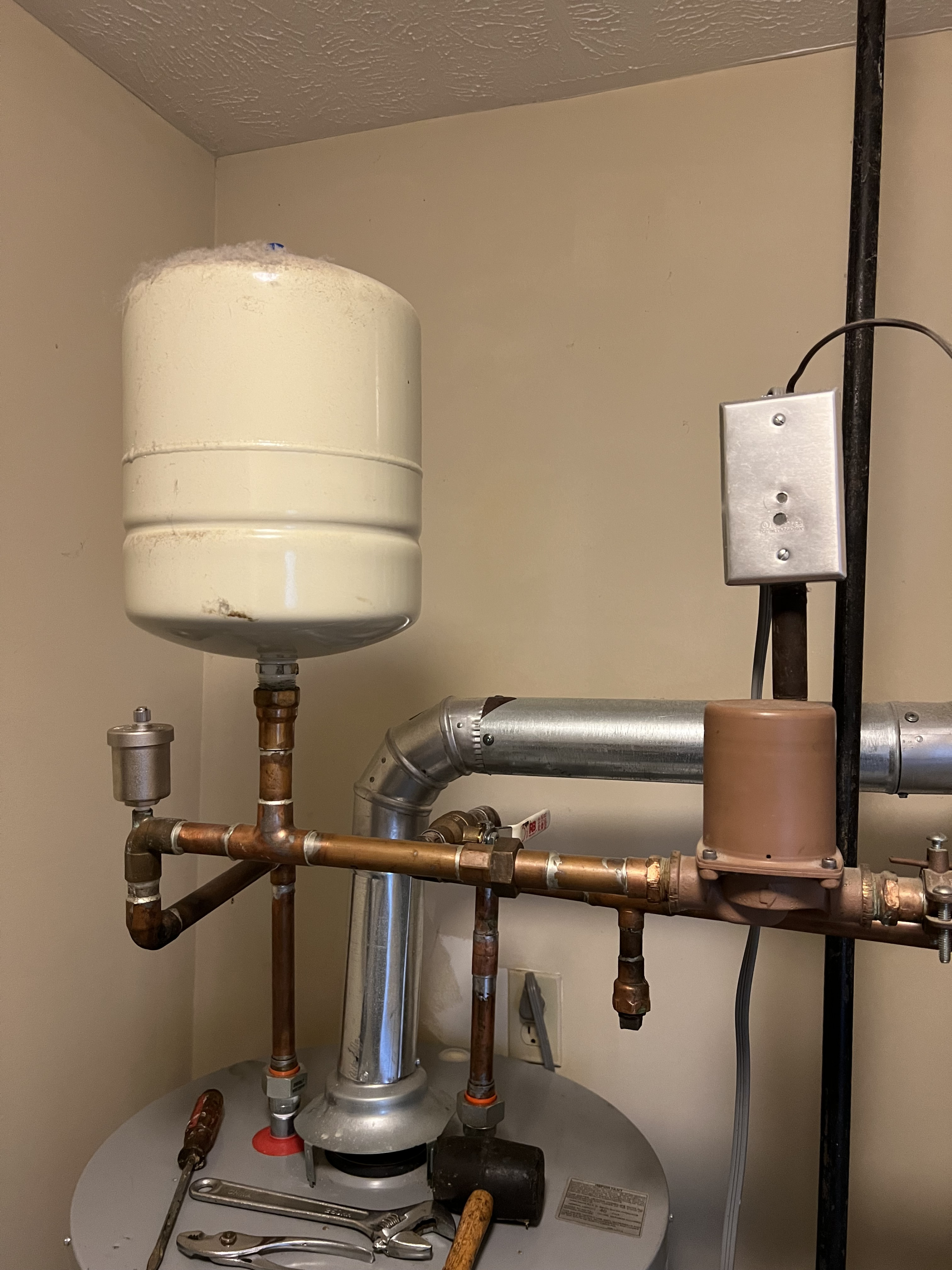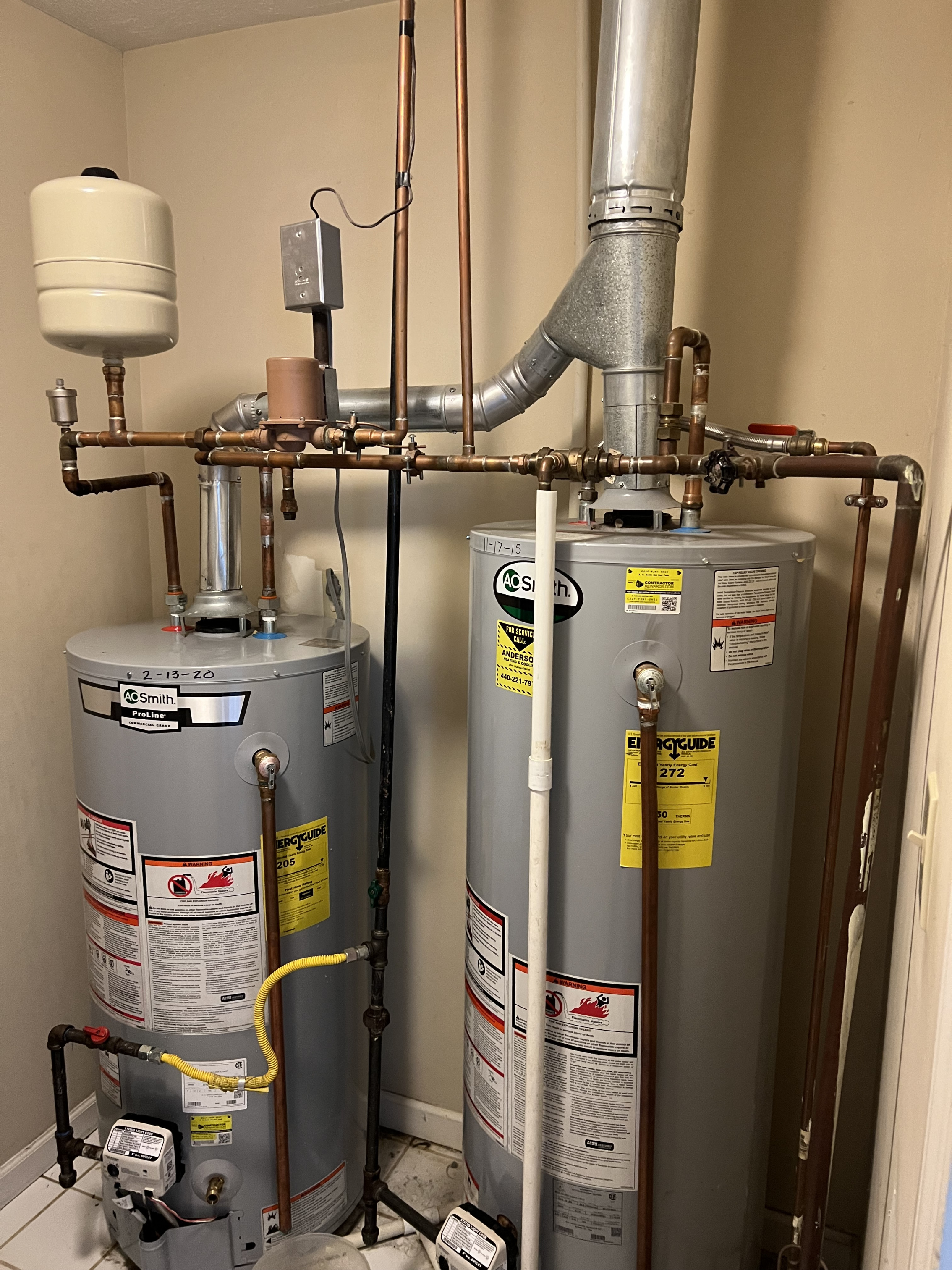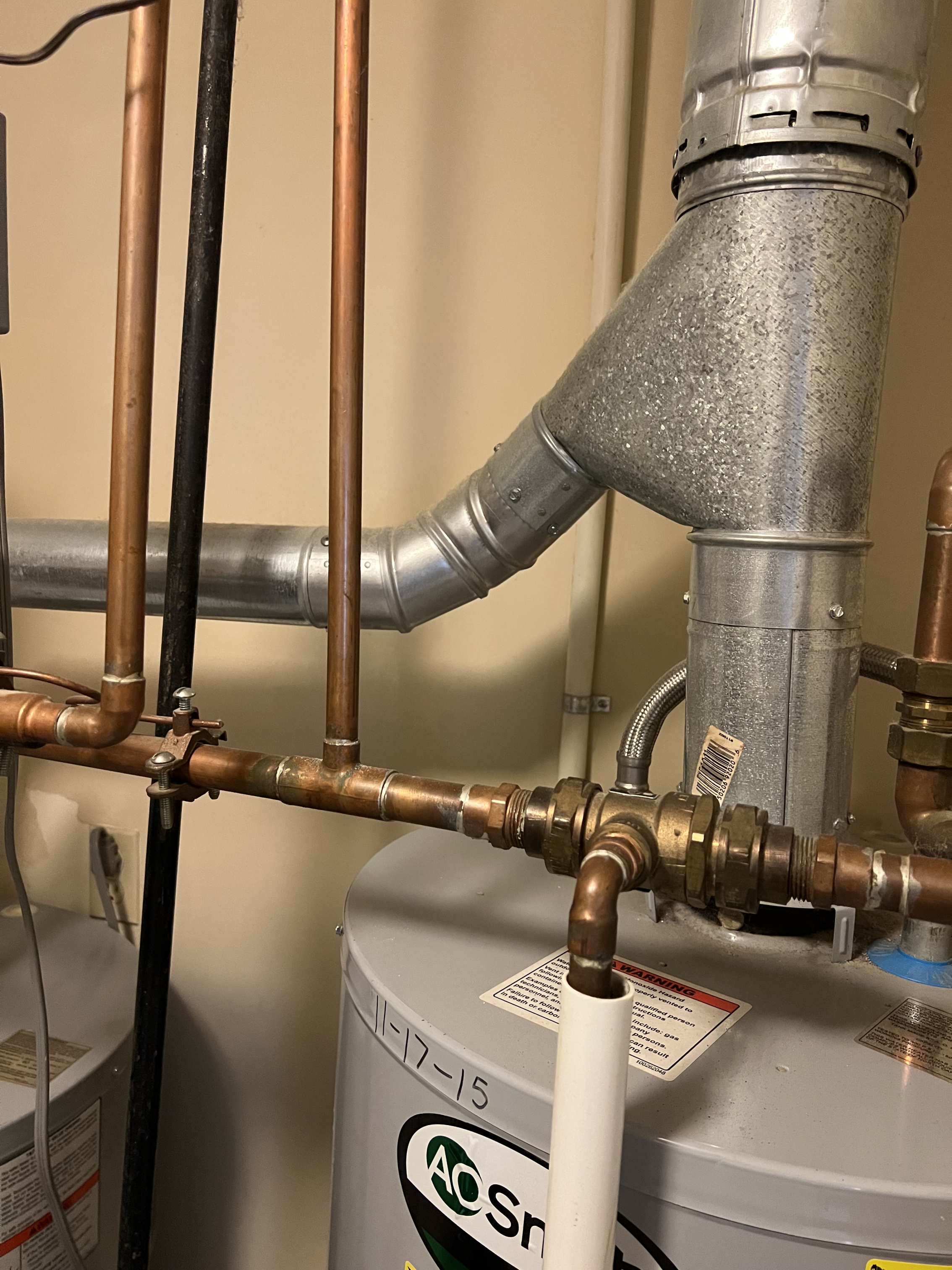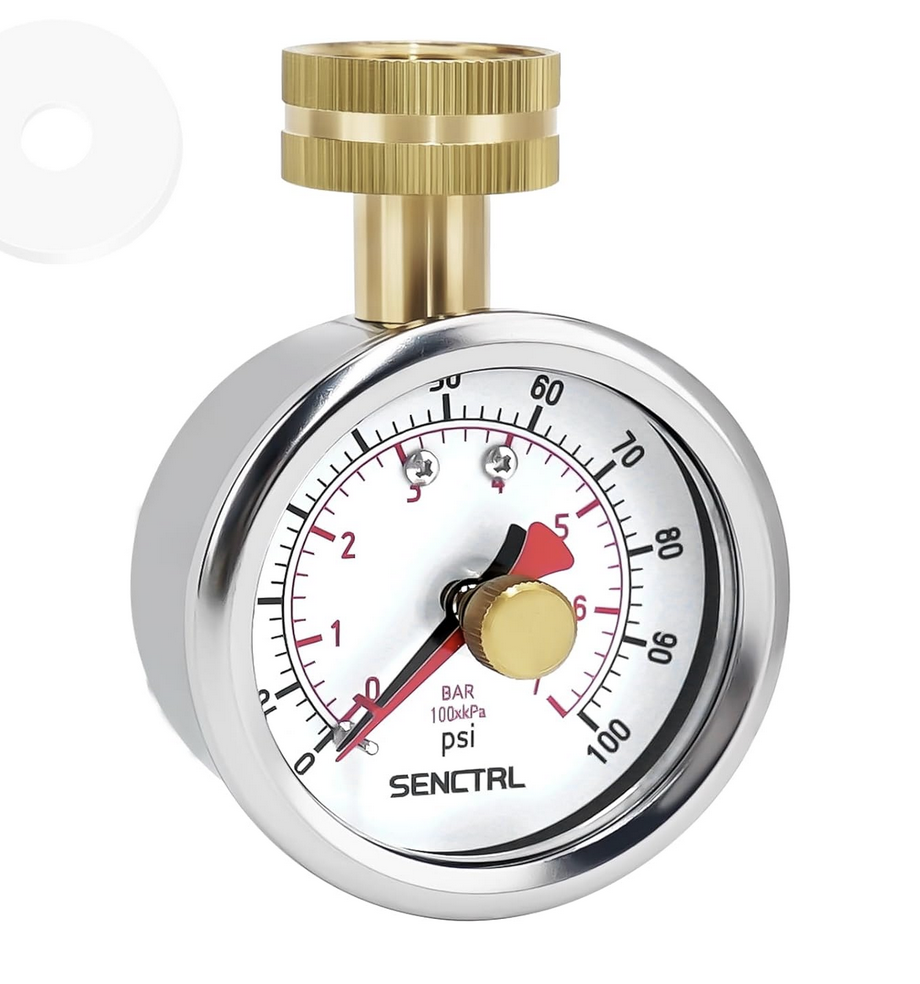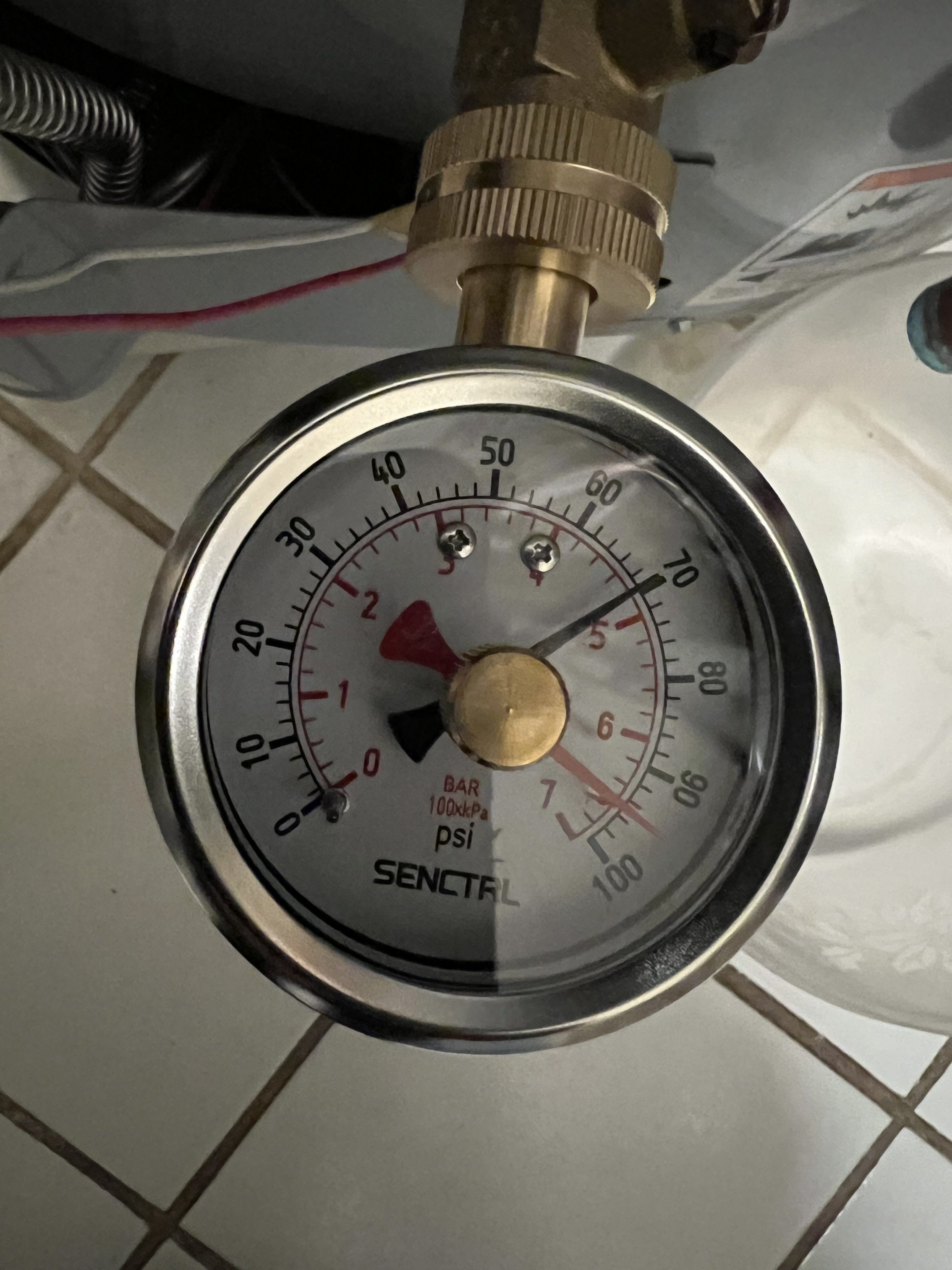Unico potable water furnace, expansion tank pressure
hi,
I have a unico system and the expansion tank before the taco pump is bad. My question is how do I figure out what pressure was in the tank previously?
The hot water tank is on the first floor and the unico fan and coils are on the second floor. 2 story house.
The tank is 22 years old and this is the first time changing it.
Been trying to track down where air is getting into the system. I go probably 6 months after a clean and purge and the pump starts making noise, air in the system again.
Thanks!
Comments
-
-
thanks ggross,
In researching, I have found conflicting information on the tank pressure.
1 camp seems to say it should be the line pressure and another sets it at 10-15 psi.
Does the pump pressure figure into the equation as the tank is on the suction side of the pump.
0 -
both of those answers are correct its just not fully explained. Typical hydronic system have a static pressure between 12-18 PSI, most hydronic tanks come pre-charged at either 12 or 15 PSI, you have a system that is a DHW tank, so if your expansion tank is on a closed loop, separated from the well water pressure, it needs to be charged to the static pressure of the system, which would be between 12-18 PSI. If it's attached to a DHW system it needs to be charged to roughly pressure your well water is at. different applications different requirements. Off hand it sort of looks like the water heater is installed in a space heating only application, if so you will be in the 12-18 PSI range, typically you would decide that pressure setting based on how many floors there are in the house
0 -
thanks,
This is not a well water system but city water with a one way valve. I will set it at 15 lbs and see how it works, not too much work to drain and re-adjust as I have to flush my hot water tanks at least once a year because of the calcium in the water supply.
0 -
-
it has a one way valve feeding it. Tank is heat only. I have another tank for the hot water.
0 -
that just looks like a backflow preventer, nothing on the heaters side of the system to reduce pressure from the street? if there is no pressure reducing valve on the heater side of the piping, then you need to set the pressure to roughly your street pressure, and either way you will want a DHW rated expansion tank
1 -
If this is correct — that is, if that valve is just a backflow preventor and not a pressure reducing valve, then the pressure tank needs to be set to the domestic water pressure when the system is cold, and the pressure tank needs to be certified to operate at that pressure.
Br. Jamie, osb
Building superintendent/caretaker, 7200 sq. ft. historic house museum with dependencies in New England2 -
Hold on. You’re missing something here!
The pressure in the tank is supposed to be set to match the minimum pressure in the system. In other words, the system pressure determines the tank pressure, not vice versa. Therefore, there’s no fixed (one size fits all) pressure setting.
It makes no sense to set it at 15 psi if the minimum pressure is 60 psi or more. That would greatly reduce the acceptance volume of the tank and render it virtually useless.
It would appear from your description of flushing minerals out of the tank annually that potable water is also being heated by the water heater. Correct? That’s unfortunate because you run the risk of Legionella contamination in the heater from stagnant water from the heating system. However, there are a lot of these types systems out there from days gone by.
At any rate, you need to find the static water pressure on the water heater and set the air pressure on the expansion tank to the same. That must be done with no water pressure on the expansion tank.
Your circulator is also mounted incorrectly. It needs to be rotated to where the motor is horizontal, not vertical.
Bob Boan
You can choose to do what you want, but you cannot choose the consequences.2 -
Hi, A couple of thoughts. Try putting a gauge on the drain valves of the tanks and measure the actual pressure. That might help in getting to the truth a bit faster… I would want a drain and waste valve installed between the expansion tank and system, so you can check/charge it easily… The pump is mounted vertically in a way that can trap air and damage the bearings. I'd rotate it to sideways… The pump is pulling water away from an air vent. If pressure falls low enough, it could pull air in and cause problems… The older tank is nearly ten years old. It needs a new anode! Also, it's time now to check the anode on the newer tank.
Yours, Larry
2 -
thanks for the input guys,
- I have thought about changing the pump position, the system had ran at least 18 -20 years on the original pump. I’m on my second in 3 years because the previous tech put flexible rubber lines on the inlet/outlet to the hot water tank. I have that fixed now, the system seems to be running quietly right now but I don’t have it fully bled as the water tank is still heating up.
- I did get a gauge to connect to the system when I do some more work on it. Is 30 lbs ok or should I go bigger? I do have an 100 laying around. And where in the system?
0 - I have thought about changing the pump position, the system had ran at least 18 -20 years on the original pump. I’m on my second in 3 years because the previous tech put flexible rubber lines on the inlet/outlet to the hot water tank. I have that fixed now, the system seems to be running quietly right now but I don’t have it fully bled as the water tank is still heating up.
-
-
thanks Larry, my brain was thinking suction/drain side of the pump.
Just ordered one, 11.92 with 2 day delivery!
0 -
Ok guys,
I have the gauge on the drain. And I’m reading 70 lbs pressure, but the tank is hot. Should I let it cool down and check the pressure again then drain and set the expansion tank pressure to what the gauge is reading?
I’m getting 92° from the ports when running now, and the pump is quiet. Just this one issue to resolve now.As always, thanks for the help!
0 -
That looks like you have 70 PSI water pressure on your system. DO NOT set the air pressure in the tank to 15 PSI. You may as well not connect the tank at all. If you want the tank to do the job it was intended to do, set that air pressure WITH THE TANK NOT CONNECTED TO THE SYSTEM to 65 -70 PSI air pressure.
If the tank is connected to the water pressure in the system, the water pressure in the system will compress whatever air is in that tank to 70 PSI. Don't measure the tank air pressure with water pressure on the other side of the tank.
Edward Young Retired
After you make that expensive repair and you still have the same problem, What will you check next?
2
Categories
- All Categories
- 87.3K THE MAIN WALL
- 3.2K A-C, Heat Pumps & Refrigeration
- 61 Biomass
- 427 Carbon Monoxide Awareness
- 119 Chimneys & Flues
- 2.1K Domestic Hot Water
- 5.8K Gas Heating
- 115 Geothermal
- 165 Indoor-Air Quality
- 3.7K Oil Heating
- 76 Pipe Deterioration
- 1K Plumbing
- 6.5K Radiant Heating
- 395 Solar
- 15.6K Strictly Steam
- 3.4K Thermostats and Controls
- 56 Water Quality
- 51 Industry Classes
- 50 Job Opportunities
- 18 Recall Announcements
